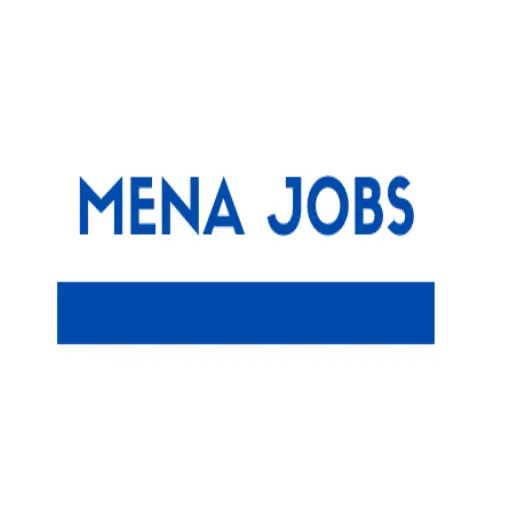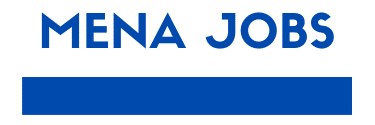
HI
Presentation of the project to be evaluated **
Title of the project
INCLUSIVE DISASTER RISK MANAGEMENT IN THE LATIN AMERICAN REGION: AN INNOVATIVE APPROACH FOR THE INCLUSION OF THE HIGHEST RISK GROUPS
Application dates
October 1, 2017 – April 2021
Location/areas of intervention
Peru, Paraguay, Ecuador and Colombia
Chile, Bolivia and Nicaragua for regional activities with civil society
operating partners
Save the children in Peru
COOPI in Paraguay
objective group
Groups in a situation of greater risk in the face of disasters, such as women, people with disabilities, the elderly, and the indigenous population.
The project budget
US dollars 1,664,000
Project Objectives
Increase the protection and resilience of groups most at risk, including people with disabilities, women, older people and ethnic groups, before, during and after disasters, and especially in the face of pandemic risk, including for the COVID-19.
The total number of target people will be 4,645 people (1,600 people for GIRD activities and 3,045 people for pandemic mitigation needs activities; 2,767 women; 1,878 men).
Results
-
DRM actors at the national level have shown increased capacity to apply inclusion and protection approaches.
-
Improving inclusion and protection in disaster preparedness and response at the community level in Peru, Paraguay and Colombia
-Regional mechanisms for the exchange of experiences established for learning and expanding good practices of protection and inclusion in future humanitarian explosions for multiple threats.
-Vulnerable persons with disabilities in Colombia and Peru are more resilient to the adverse psychosocial and economic impacts of the pandemic, including for COVID-19 in Peru and Colombia.
indicators
-
Number of people trained in protection.
-
Number of modified DRM plans, procedures or practices from an inclusive perspective.
-
Number of civil society organizations from groups at greatest risk trained to defend their participation and their needs.
-
Number of public/private organizations and services involved in capacity building for disability inclusion
-
Number of individual beneficiaries participating in psychosocial support services
-
Percentage of individual beneficiaries who report an improvement in their psychosocial well-being (disaggregated by sex, age, disability and profession).
-
Number of individual health professional beneficiaries participating in psychosocial support services
-
Number of people assisted through livelihood restoration activities
-
Percentage of beneficiaries reporting net income from their means of subsistence
Main activities carried out
-
Coordination of actors in national GIRD committees
-
Advocacy for a GIRD at the regional level
-
Empowerment of actors representing the groups at greatest risk
-
Reinforcement of DRM actors in inclusion
-
Communication campaigns and advocacy material
-
Formations and ToTs
-
Preparation and dissemination of instruments and tools to apply an inclusion approach
-
Dissemination of Resources, good practices and Lessons learned
-
- Support to strategic partners implementing pandemic risk reduction interventions, including COVID19, to ensure disability-inclusive programming
-
Diagnosis of the accessibility and inclusiveness of the communication strategy during pandemics, including COVID19, by public agents and NGOs
-
Strengthening municipal disability offices to provide information and referrals to people with disabilities in the context of COVID-19
-
Support to the Colombian Coalition for the Implementation of the United Nations Convention on the Rights of Persons with Disabilities (CRPD) in its promotion and recommendation work in the context of the pandemic.
-
Peer support groups and disability-inclusive physical training sessions for people who are vulnerable or at risk
-
Cascade training of mental health and psychosocial support professionals on disability-inclusive emergency care.
-
Capacity building for entrepreneurs with disabilities.
2.1 General objective
Evaluate the level of change of the project on the users, highlight the lessons learned and clues for future emergencies.
2.2 Specific objectives
-
Assess the effectiveness of strategies, approaches, activities and tools implemented in achieving project results.
-
Identify what is good and what can be improved.
-
Identify learning and good practices that can be replicated.
-
Identify the impact of the health emergency context due to the Covid-19 Pandemic on the implementation of the project (challenges and opportunities)
-
Identify unexpected results achieved with the implementation of the project
-
Identify the impact of the political and governance crises in the different countries on the execution and impacts of the project.
2.3 Evaluation criteria and evaluation questions
*The chosen criteria come from the HI framework (cf: suspicion):
criterion
question
relevance
¿En qué medida el proyecto ha respondido a las expectativas y contribuido a alcanzar las prioridades de las partes interesadas?
¿El proyecto ha adaptado suficientemente sus estrategias y acciones al contexto de la pandemia en cada país de intervención?
Capacidades
¿Cómo ha incrementado el proyecto la capacidad de los actores involucrados para implementar procesos de gestión inclusiva del riesgo de desastres?
¿Se han desarrollado las competencias necesarias para llevar a cabo el proyecto?
¿Se apoyó suficientemente la dinámica de aprendizaje interna/externa durante el proyecto?
eficacia
¿En qué medida las estrategias y herramientas conceptuales y metodológicas aplicadas han permitido alcanzar los objetivos del proyecto?
¿En qué medida contribuyen las actividades y los productos obtenidos a la consecución del objetivo del proyecto?
Participación
¿En qué medida el proyecto ha promovido la participación de los grupos en situación de mayor riesgo en la construcción de políticas y procesos de gestión inclusiva del riesgo de desastres?
¿Los espacios de participación y las estrategias de comunicación eran inclusivas y accesibles?
metodologia de recogida
Es la responsabilidad del evaluador de proponer su metodología, pero, sin embargo, HI propone que la colecta de información sea cualitativa y cuantitativa, de la siguiente manera:
• Revisión de documentos y productos del proyecto.
• Entrevistas con el equipo de HI (gerente de operaciones, jefes de proyecto, especialista GIRD, equipo MEAL).
• Taller con los jefes de proyecto
• Talleres/grupos focales con los Comités nacionales GIRD (Perú + Colombia + Paraguay)
• Entrevistas con los socios implementadores y socios claves (autoridades y OSC a nivel nacional y regional)
• Grupos focales con los beneficiarios, privilegiando grupos focales diferenciados (reuniendo únicamente mujeres, personas con discapacidad o líderes indígenas, por ejemplo)
• Análisis de bases de datos generados por el proyecto, de las líneas de bases y de los informes de avance.
Es importante que el equipo consultor cruce las informaciones recopiladas y en este sentido usará una mezcla de metodología cualitativa como cuantitativa con una fuerte dimensión participativa. Este proceso debe permitir que los resultados sean apropiados por los diferentes socios y partes interesadas en el proyecto. Si la situación sanitaria no permite realizar el trabajo de recopilación de datos de manera presencial en el terreno, se considerará la posibilidad de hacerlo a distancia.
Organización de la misión
**
El Comité de coordinación comprenderá las personas claves del proyecto (HI y Socios) y del equipo regional de HI.
-
La reunión inicial que da lugar a un informe inicial**
-
La presentación**
-
Aplicación de Herramientas**
-
Reuniones de seguimiento **
-
Comunicación entre el Comité de Coordinación y el evaluador sobre el informe intermedio**
-
Validación del informe final (sobre la base de la lista de control de calidad, capítulo adjunto 6)**
Fechas y calendario de la evaluacion
Duración total de la misión: del 01/04/2022 al 22/08/2022
Fechas y calendario tentativo:
ETAPA
FECHA INICIO
ALETA FECHA
Convocatoria
28 de febrero
21 de marzo
Selección consultores
22 de marzo
25 de marzo
contrato firme
01 de abril
Kick off meeting y revisión documental
20 de abril
29 de abril
Informe Inicial (Plan de acción con metodología propuesta)
16 de mayo
20 de junio
Trabajo de Campo (Lima Perú)
junio (a definir con el consultor)
junio (a definir con el consultor)
Trabajo de Campo (Bogotá, Lima)
junio (a definir con el consultor)
junio (a definir con el consultor)
Trabajo de Campo (Asunción, Paraguay)
junio (a definir con el consultor)
junio (a definir con el consultor)
Entrevistas extras
julio
julio
Presentacion de los primeros resultados
finales de junio
Primera versión del informe (primeros resultados)
01 de agosto
05 de agosto
Comentarios HI y socios
08 de agosto
12 de agosto
último informe
16 de agosto
19 de agosto
Presentation of the final report to the steering committee and the donor
week of august 22
Proposals must include :
· Curriculum vitae
· Technical and methodological proposal (including the action plan) to carry out the evaluation.
· The references of previous evaluations that you have carried out.
· The economic proposal.
· Examples of work carried out
How to apply
Address and shipping deadline
*Proposals will be received by email [email protected] no later than March 21, 2022.*
*Please indicate in the subject: External Eval GIRD BHA*
Job Alerts
Subscribe to get the latest vacancies
[wpforms id=”3416″]
